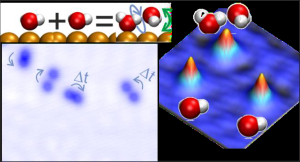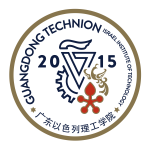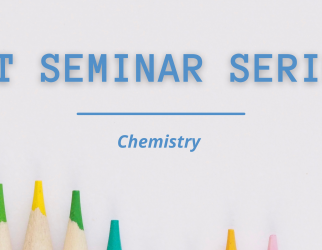
Diffusion at the atomic scale
Title
Diffusion at the atomic scale
Speaker
Prof. Karina Morgenstern (karina.morgenstern@rub.de ) (Physical Chemistry I, Ruhr University of Bochum, Universitätsstr. 150 D-44803 Bochum, Germany)
Host
Prof. Kai Huang (GTIIT, Chemistry)
Time and Location
Jul. 18 2022, Monday, 4:00pm-5:00pm(China Time), 10:00am-11:00am(Germany Time), E210 (Education Building, 2nd floor)
Zoom Link
https://gtiit.zoom.us/j/94609938903
Language
English
Abstract
 Surface diffusion is central to many technological processes, such as crystal growth, catalysis, sintering, etc. It influences the stability of functional, technologically important materials. Therefore, the motion of adatoms on surfaces was widely investigated and the basic mechanism of motion is quite well understood, although not completely unveiled [1]. However, it is still quite a challenge to probe the motion of slightly bigger objects, such as dimers and trimers [2-4], or even the smallest molecules.
Surface diffusion is central to many technological processes, such as crystal growth, catalysis, sintering, etc. It influences the stability of functional, technologically important materials. Therefore, the motion of adatoms on surfaces was widely investigated and the basic mechanism of motion is quite well understood, although not completely unveiled [1]. However, it is still quite a challenge to probe the motion of slightly bigger objects, such as dimers and trimers [2-4], or even the smallest molecules.
We have used time-lapsed scanning tunneling microscopy [5] at varying temperature to follow the diffusive motion of individual molecules on metallic surface. While the motion of small molecules is comparable to that of atoms, the additional degrees of freedom of dimers and trimers of smaller molecules and that of larger molecules lead to surprising diffusivities, which we understand in conjunction with theoretical calculations. The examples discussed in this talk comprise CO [6], water [7] and phtalocyanine [8]. They demonstrate the importance of using a real-space method in understanding complex diffusion mechanisms.
[1] Antczak, G.; Ehrlich, G. Surface Diffusion: Metal, Metals atoms and Clusters, Cambridge University Press: Cambridge, 2010.
[2] Jurczyszyn, L.; Antczak, G. Appl. Surf. Sci. 299, 146 (2014).
[3] Fijak, R.; Jurczyszyn, L.; Antczak, G. Surf. Sci. 608, 115 (2013).
[4] Morgenstern, K.; Braun, K.-F.; Rieder, K.-H. Phys. Rev. Lett. 93, 056102 (2004).
[5] C. Zaum, C. Bertram, K.M. Meyer auf der Heide, M. Mehlhorn, K. Morgenstern, Rev. Sci. Instr. 87, 053902-1-7 (2016).
[6] C. Zaum, K.M. Meyer auf der Heide, M. Mehlhorn, S. McDonough, W.F. Schneider, K. Morgenstern, Phys. Rev. Lett. 114, 146104 (2015); C. Zaum, K. Morgenstern, Nano Lett. 16, 3001 (2016); C. Zaum, K. Morgenstern, Phys. Rev. Lett. 121, 185901 (2018); C. Zaum, K.M. Meyer auf der Heide, K. Morgenstern, Phys. Rev. B 97, 155437 (2018).
[7] S.-C. Heidorn, C. Bertram, P. Cabrera-Sanfelix, K. Morgenstern, ACS Nano 9, 3572-3578 (2015); C. Bertram, K. Morgenstern, P. Pedevilla, A. Michaelides, Nano Lett. 9, 710 (2019), W. Fang, K. Meyer auf der Heide, C. Zaum, A. Michaelides, K. Morgenstern, Nano Lett. 22, 340 (2021).
[8] G. Antczak, W. Kamiński, A. Sabik, C. Zaum, K. Morgenstern, J. Am. Chem. Soc. 137, 14920-14929 (2015).
Biography
Dr. Morgenstern studied Physics and Computer Science in Bonn and Knoxville, Tennessee, obtaining her diplomas in 1993 and 1994, respectively. Her Ph.D. thesis in the field of surface science was supervised by George Comsa, FZ Jülich, and Flemming Besenbacher, Universitet Aarhus, Denmark. It was completed in 1996. After a postdoctoral stay at the University of Lausanne, she finished her habilitation in the group of Karl-Heinz Rieder at the Free University in Berlin in 2002. In 2005 she became Professor of Solid State Physics (W3) at the University of Hannover. Since 2012 she is holding the Chair of Physical Chemistry I (W3) and an adjunct Professor at the Physics Department at the Ruhr-Universität Bochum, investigating atom’s and molecule’s physical and chemical properties on metal surfaces. The measurements are carried out using scanning tunnelling microscopy (STM) and other surface-sensitive methods in an ultra-high vacuum, which allow the imaging and manipulation of individual molecules in submolecular resolution. The knowledge gained provides the basis for the establishment of new types of nanostructures in new technological areas and the modification of molecular reactions on the nanoscale. She published 178 research papers (H-index: 44, citation: 7000+) in high profile journals, supervised 20+ graduate students and postdocs, obtained several awards during her carrier: a fellowship from the Studienstiftung des Deutschen Volkes from 1988-1993, a U.S.A.-fellowship of Akademischen Auslandsamt of the University in Bonn 1990/1, the Günther-Leibfried-Preis of the Forschungszentrums Jülich in 1997, the Hertha-Sponer-Preis of the German Physical Society in 2002 and a Heisenberg fellowship from the German Research foundation in 2003-2005. She sits in the editorial board of Progress in Surface Science (2016-), Editorial Advisory Board of Journal of Chemical Physics (2015-), and a divisional associate editor of Physical Review Letters(2018-).
Speaker
-
Prof. Karina Morgenstern
Local Time
- Timezone: America/New_York
- Date: 18 Jul 2022
- Time: 4:00 am - 5:00 am

